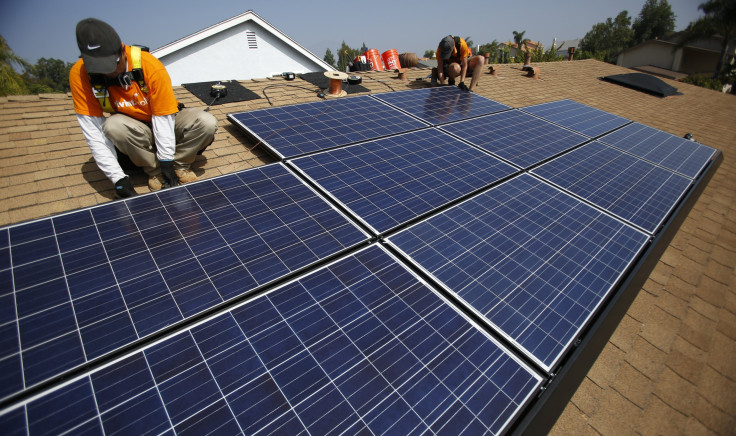In Latest Sign Of America's Rooftop Solar Boom, Sunrun Inc Files For $100M IPO

In the latest sign that America’s rooftop solar sector is going mainstream, the San Francisco solar company Sunrun Inc. filed its initial public offering document with the U.S. Securities and Exchange Commission Thursday. With the cost of owning solar systems plunging -- and concerns about climate change and energy security climbing -- businesses and homeowners are increasingly switching to solar sources to supply their electricity.
Sunrun’s IPO bid, initially set at $100 million, would make it a strong publicly traded competitor to SolarCity Corp. (NASDAQ:SCTY), the leading U.S. solar installer. Both companies act as third-party financers, installing solar panels on customers’ roofs for little or no cost. Customers then pay the firms fixed monthly fees for the electricity the panels produce.
Sunrun has about 79,000 customers across 13 states, with projects totaling about 430 megawatts in solar-power capacity. Based in San Mateo, California, and chaired by tech billionaire Elon Musk, SolarCity has around 218,000 customers, according to Greentech Media.
Solar-power costs have plummeted to 5 cents per kilowatt-hour now from about 15 cents a decade ago. By comparison, conventional wholesale electricity averages around 3 cents per kilowatt-hour in the U.S. Meanwhile, solar-panel prices have been almost halved in recent years. Financing plans offered by Sunrun and its competitors make it possible for homeowners to install systems worth tens of thousands of dollars for a fraction of the cost.
Nationwide, nearly 200,000 homes and businesses added rooftop or on-site solar installations in 2014, bringing the total count to more than 600,000 nationwide, the Solar Energy Industries Association and GTM Research said in an annual report. The annual market for solar photovoltaic (PV) technology is now valued at more than $13 billion, up from just $3 billion six years ago.
Founded in 2007, Sunrun reported $198.6 million in revenue in 2014, almost quadrupling the $54.7 million booked the previous year. However, its expenses also soared. Sunrun’s net loss for 2014 was $167.5 million, compared with $66 million in 2013, the Wall Street Journal reported.
In its SEC filing Thursday, Sunrun indicated its intention to list its common shares on the Nasdaq Stock Market under the ticker symbol RUN.
Despite falling costs and rising consumer interest, the rooftop solar sector still faces substantial obstacles. In some states, traditional power companies and utility regulators are pushing back against widespread solar adoption. They say they’re worried an influx of solar systems could jack up the price of electricity for everybody else. Utilities say they’re also concerned that bringing on lots of intermittent solar power -- which isn’t available at night or on cloudy days -- could threaten grid reliability and safety.
In some states such as Alabama, Arizona, New Mexico and Virginia, solar users must pay local utilities in exchange for hooking their systems to the main electric grids. The power companies say it’s a matter of fairness: Solar-panel owners still depend on the grids when the sun isn’t shining, and yet they’re not necessarily paying for that access. In those and other states, utilities are also pushing to limit “net metering” programs, which allow solar users to sell their excess electricity to utilities for set fees.
However, such policy battles are likely only speedbumps on the path to booming solar development. The global solar-energy industry is expected to install 36 percent more solar PV installations (55,000 megawatts’ worth) this year than it did last year. By 2020, global PV projects could reach 135,000 megawatts for the year -- enough to power roughly 20 million U.S. homes, GTM Research found.
© Copyright IBTimes 2024. All rights reserved.



















